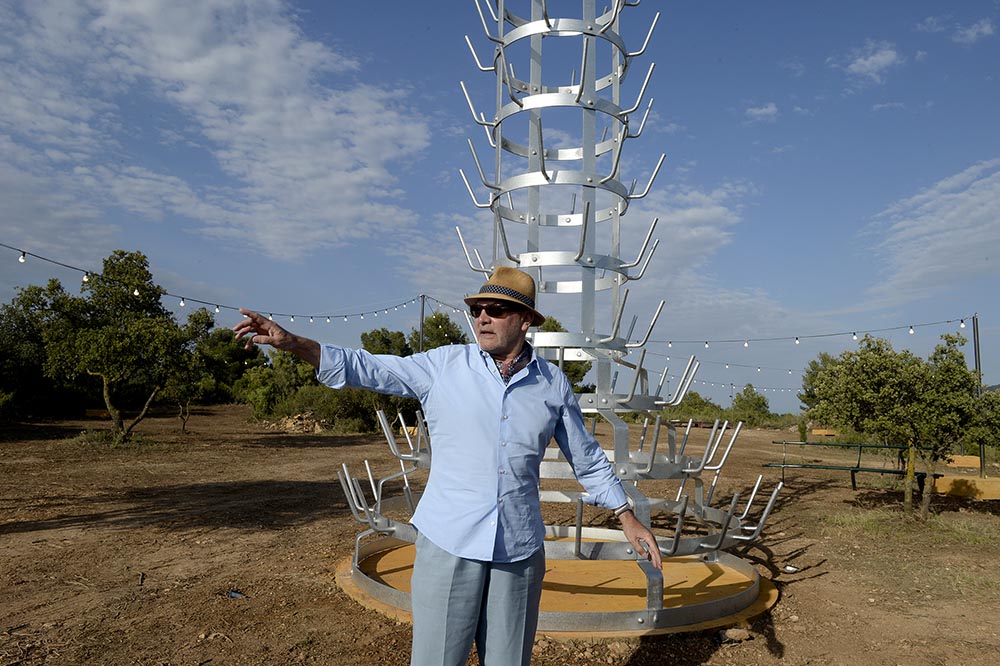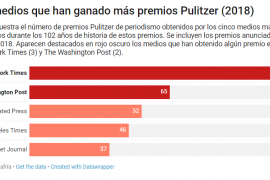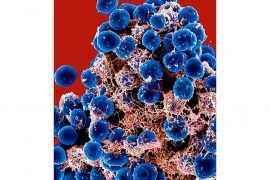The Egouttoir de Duchamp, put through artist Carlos Pazos’ filter, now watches over the vineyards and olive trees of the Mas Blanch i Jové winery. This is the ninth sculpture that is to be found in what is known as la Vinya dels Artistes—the Artists’ Vineyard–in [the village of] La Pobla de Cérvoles. Theirs is a beautiful wine cellar located where the [wine producing] counties of Les Garrigues, Conca de Barberà and Priorat meet, and has been committed since its inception to the fusion of art and wine in the midst of an idyllic rural landscape. The project is based on Agramunt-based painter Josep Guinovart’s idea and which one of the families in the village made come true in Les Garrigues over 10 years ago.
At Mas Blanch i Jové there are large-scale sculptures and installations created by artists like Carles Santos, Guinovart, Joan Brossa, Susana Solano, Evru (Zush), Frederic Amat, and others. These unique pieces coexist fancy free among the vines and the olive trees, along with the farmworkers and the tools of their trade. The winery, which has a spectacular cellar decorated with Gregorio Iglesias’ mural painting, is the pinnacle of this peculiar artistic itinerary, the last stage of a circuit that evolves into an experience for any visitor. The latest addition to this tour de force is the work of Carlos Pazos, a modern-day dandy born in Barcelona in 1949 and who lives much of the year in Paris because he considers that “art there has a social role, and the public esteems artists in their exact measure, unlike in Spain.” However, Pazos, who is an expert at swimming against the tide, has also been recognized at home. Among his accomplishments is the National Prize for the Plastic Arts, the most prestigious Spanish award which he received in 2004 for his artistic career, as fascinating as it is personal. He has now brought his Egouttoir to La Pobla de Cérvoles, and we spoke with him while tasting one of the excellent wines born of these vineyards.
What does it mean for an artist like you, who has exhibited in the best galleries, to have a work shown in an open-air space as special as this?
Well, it’s an honour. I created another work for an open space, but it ended up in the Antonio Pérez de Cuenca Foundation. So my No et prometo res—I promise you nothing—is my first open-air work. I usually do more intimate pieces, to be shown rather in closed, sombre spaces, and this is quite the opposite, but I am very pleased. Because of my pretty depressed nature I am more of an indoors type, in the shadows, but colours harmonize in a certain way. In the Pantone of nuances of mood you’ll find that either light or greys is best for you. Me, I go for greys.
How did you prepare your I Promise You Nothing?
I took it as a challenge, but I did not want to do an extension of an interior piece to be shown outside. I liked the place I chose to locate it because it was the place that made a connection between La Pobla—the village—and the vineyard. It is the belvedere of the vineyards, where you look to be seen. From here I began to polish the initial idea, making it easier to read and with more refined connotations and that’s what we’ve achieved.7
I Promise You Nothing. Why?
A wine, if it could speak from its bottle, would say “I promise you nothing” because the bottle would have to be opened and… let’s see what happens. An artist must do the same, he must do the best he can, and then the viewer or the public will say if the piece works or not. For me, it’s an object that I am returning to its primary function: it is an object that was used to dry wine bottles. Nowadays, with the cultural information we have, everyone relates this piece with Marcel Duchamp, but in fact it is an egouttoir that has returned to its origins among the vineyards.
You interpret culture as an accrual. Is that why you collect objects and use collage as a technique?
I think that collecting has an evocative value, and in my case it runs in the family. Actually, I consider myself more of a compiler of objects, since I buy everything I like and I use it for my work. In the case of I promise you nothing, I have transferred the collages I would make indoors outside and I have created it in situ. I hung the neon sign from the rocks, we found a cave where I made an installation that I called The Chapel of the Knick-knacks, and that’s how I ended up making a collage within the landscape. I have to do more than one thing because austerity is not my forte.
Your style has sometimes been labelled as kitsch and even pop art.
Well, my point of departure is pop art, but English rather than American. I feel I’m nearer Richard Hamilton than Andy Warhol. Notice that the former has a more direct link with Duchamp, with whom I feel very close. Hamilton was a great intellectual and Warhol a great philosopher who picked up on tremendous conceptual foundations and transformed them into art. I also like other artists like Chris Burden or Bruce Nauman.
Do you think art reaches the general public, or does it stays isolated in museums or art galleries?
We have a very unsophisticated audience here, and the Catalan bourgeoisie is likewise very unrefined. Nothing is done in schools, the way art is taught in this country is generally rather pitiful. The good intentions shown at certain levels of education have not been been too fruitful. I blame the public and the Establishment and the politicians, but I should also say that I have not found any easier way to reach everyone. In Paris there are fabulous budgets for culture and the way art is taught and brought to the people is very different. That’s why I think it’s not so much that it is not taught in museums and galleries, but rather that we have to do it differently.
In fact, you consider taproom bars almost as your studio.
Taproom bars and everything they represent really inspire me. You always run into friends there, with what that entails, or you might meet someone who tells very interesting tales. What’s more, I think that without drugs, art is not at all interesting and the minimum expression of drugs is alcohol. I don’t know any good artists, or any that interest me, that don’t do drugs—Hamilton for example. To make art you have to be a bit sensitive and the world is so terribly horrifying that you would just give up.
Your depressive character has helped you configure your work. Is life suffering and art a lifeline?
Depression is the artist’s fuel and many friends who know me well tell me they don’t like being depressed, but they know that when I come out of a depression, I do the most interesting stuff. Unfortunately, this is pretty much the case and I find the world becoming more and more horrible. In addition there is also the subject of children, who I find are horrible, and I find it totally irresponsible for parents to bring creatures into the world just because they feel they have to.
Initially, your work looks fun, cheerful, colourful, but when you pay attention, one’s smile freezes on one’s lips.
In my work there is profound melancholy. The thing is that I try to bring out my sense of humour, as acid as I can make it, and explain things like that. On the other hand, I don’t like brutalism or vomiting stuff either. I try to explain horrible subjects as elegantly as I can. Humour is very important and helps save you.
Do you feel you’ve done well in life? Do you feel you can come to be happy?
I consider I live well, but living and happiness are antagonistic. I have had a lot of fun, I’ve had a great time and I try to enjoy it, but I don’t consider I’m happy. It would be dangerous, because happiness is related to indolence and I am not at all indolent.
Featured image: Carlos Pazos in front of “Vinya dels Artistes” in the celler Mas Blanch i Jové. Photo by Santi Iglesias



















